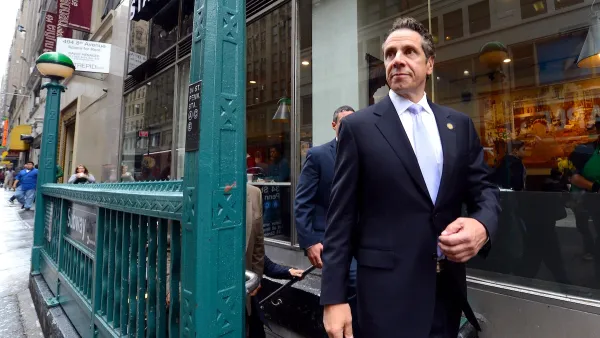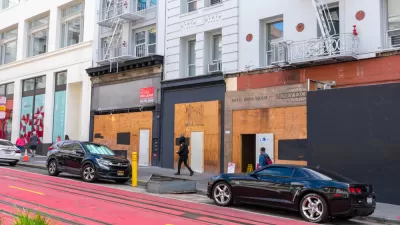Despite fears of a mass exodus, most cities are seeing only modest population losses, with the majority of movers staying in the same metro area.

Rather than the "urban exodus" that many analysts feared the pandemic would precipitate, write Marie Patino, Aaron Kessler, and Sarah Holder for Bloomberg CityLab, "perhaps it’s more of an urban shuffle."
As research about the last year begins to crystallize, "data shows most people who did move stayed close to where they came from." According to the authors, "[i]n the country’s 50 most populous cities, 84% of the moves were to somewhere within the perimeter of the central metro area, down just slightly from pre-pandemic levels."
New York City and San Francisco saw more dramatic changes. "The regions around San Francisco and San Jose, two of the country’s most expensive housing markets, saw the rates of permanent moves increase the most, by more than 23% and 17% respectively, compared to 3% nationally." New York City "saw the greatest loss in net moves into the city over the past year" as Manhattan residents relocated to outer boroughs, nearby suburbs like Long Island, and outlying areas like the Bridgeport-Stamford-Norwalk region of Connecticut, less than 60 miles from the city. Some smaller cities are seizing on the opportunity with incentive programs designed to attract remote workers.
But the "release valve" created by the sudden boom in remote work "is not available to the majority of American workers, who can’t work remotely, particularly essential workers and low-wage workers." Knowing the remote work boom may not last, cities like Stockton, "a sizable majority-nonwhite city that’s been deemed the most diverse in America," are focusing instead on attracting companies and job opportunities for existing residents.
FULL STORY: More Americans Are Leaving Cities, But Don’t Call It an Urban Exodus

Planetizen Federal Action Tracker
A weekly monitor of how Trump’s orders and actions are impacting planners and planning in America.

Maui's Vacation Rental Debate Turns Ugly
Verbal attacks, misinformation campaigns and fistfights plague a high-stakes debate to convert thousands of vacation rentals into long-term housing.

Cuomo Is the Candidate of Both NIMBYs and Developers. What Gives?
In the New York City mayoral race, odd bedfellows align to preserve the housing status quo.

The Subversive Car-Free Guide to Trump's Great American Road Trip
Car-free ways to access Chicagoland’s best tourist attractions.

San Antonio and Austin are Fusing Into one Massive Megaregion
The region spanning the two central Texas cities is growing fast, posing challenges for local infrastructure and water supplies.

Charlottesville Temporarily Has No Zoning Code
A judge ordered the Virginia city to throw out its newly revised zoning code, leaving permitting for new development in legal limbo.
Urban Design for Planners 1: Software Tools
This six-course series explores essential urban design concepts using open source software and equips planners with the tools they need to participate fully in the urban design process.
Planning for Universal Design
Learn the tools for implementing Universal Design in planning regulations.
Heyer Gruel & Associates PA
JM Goldson LLC
Custer County Colorado
City of Camden Redevelopment Agency
City of Astoria
Transportation Research & Education Center (TREC) at Portland State University
Jefferson Parish Government
Camden Redevelopment Agency
City of Claremont





























